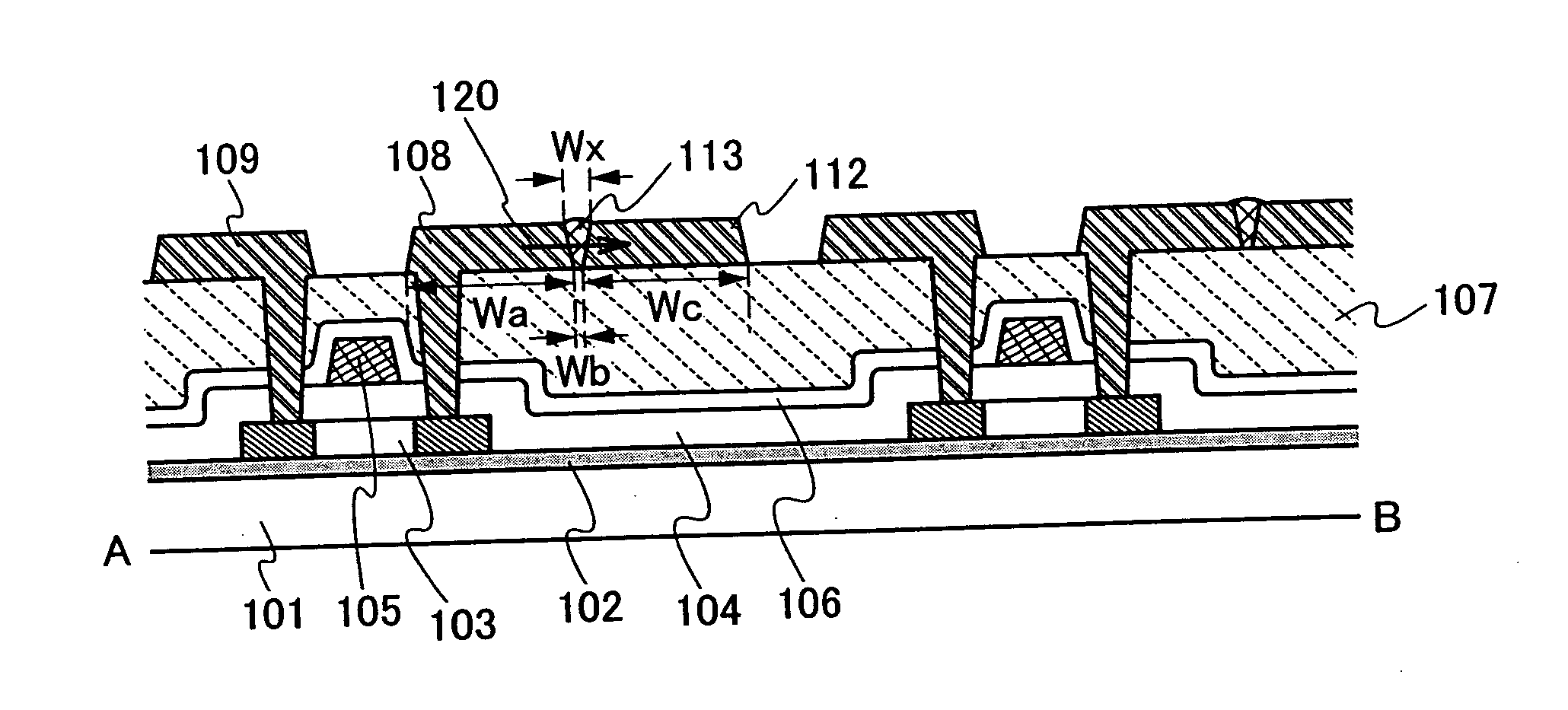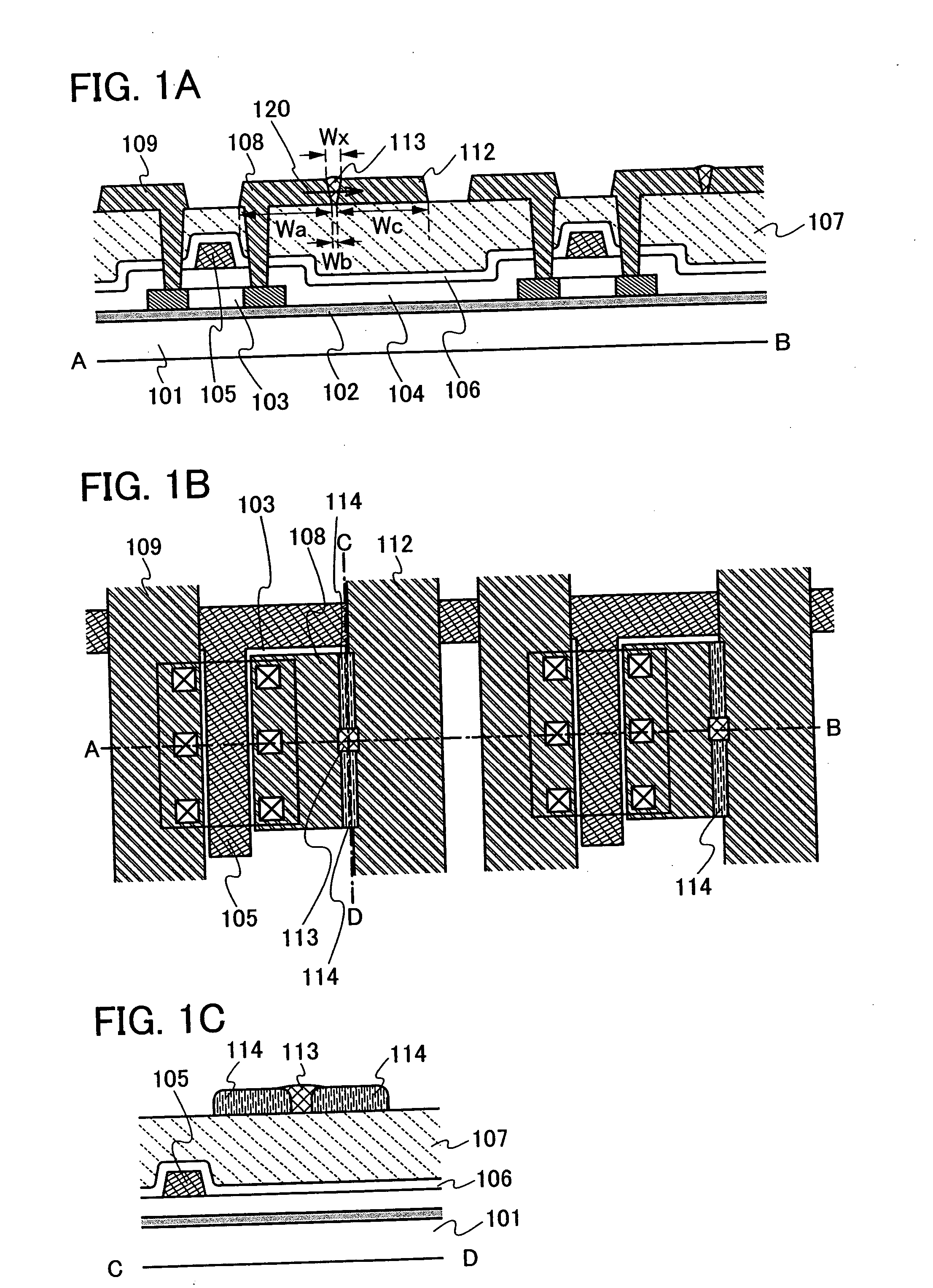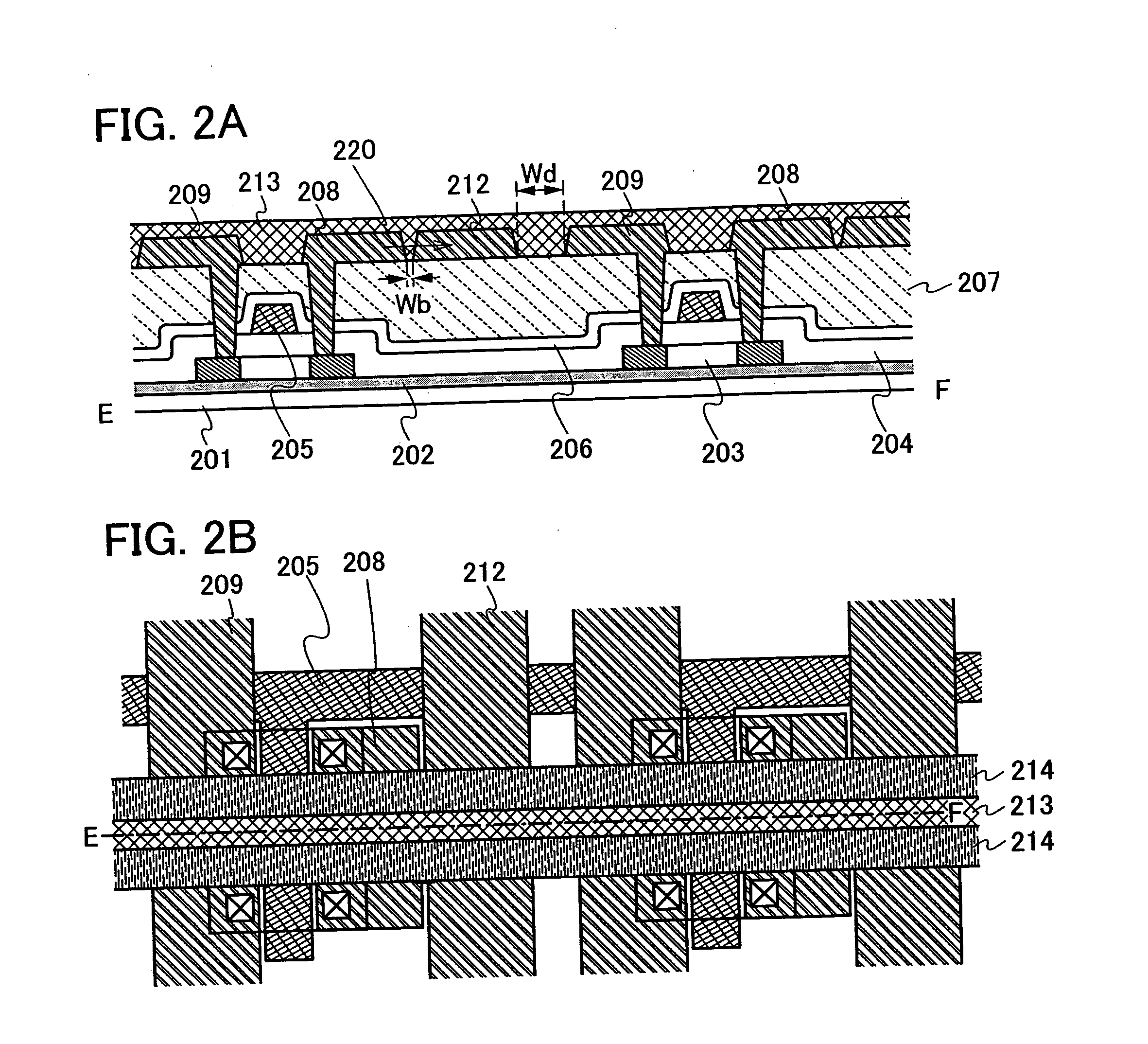Semiconductor device and method for manufacturing the same
a semiconductor and semiconductor technology, applied in the field of semiconductor devices, can solve the problems of increasing the number of manufacturing steps, the inability to additionally write data, and the limited forming method of the electrode, and achieve the effects of simple manufacturing process, low cost, and low cos
- Summary
- Abstract
- Description
- Claims
- Application Information
AI Technical Summary
Benefits of technology
Problems solved by technology
Method used
Image
Examples
embodiment mode 1
(Embodiment Mode 1)
[0046] In this embodiment mode, an example of a structure of a memory element included in a semiconductor device according to the present invention will be explained with reference to drawings. More specifically, an example of a structure of a memory circuit in which a plurality of memory elements is arranged in matrix will be described.
[0047]FIG. 1A shows a part of a cross-sectional structure of a memory cell array including a plurality of memory elements according to the present invention. FIG. 1B is a top view, and a cross-section taken along a chain line A-B in FIG. 1B corresponds to FIG. 1A. Further, FIG. 1C shows a cross-sectional structure taken along a chain line C-D in FIG. 1B.
[0048] Openings (contact holes) which reach a semiconductor layer 103 are provided in a second insulating layer 104, a third insulating layer 106, and a fourth insulating layer 107. A bit line 109, a first electrode 108, and a common electrode (second electrode) 112 are provided s...
embodiment mode 2
(Embodiment Mode 2)
[0092] In this embodiment mode, FIGS. 2A and 2B show an example of a memory element which is partially different from the memory element shown in FIGS. 1A, 1B and 1C. FIG. 2A is a cross-sectional view of two memory elements, FIG. 2B is a top view of the two memory elements, and a diagram taken along a chain line E-F in FIG. 2B corresponds to FIG. 2A.
[0093] In FIG. 2A, similarly to FIG. 1A, a first insulating layer 202 is provided over a substrate 201 having an insulating surface, and a semiconductor layer 203 is provided over the first insulating layer 202. A second insulating layer 204 is provided over the first insulating layer 202 and the semiconductor layer 203. A word line (gate line) 205 is provided over the second insulating layer 204. A third insulating layer 206 is provided over the word line (gate line) 205, and a fourth insulating layer 207 is provided over the third insulating layer 206. A bit line 209, a first electrode 208, and a common electrode 21...
embodiment mode 3
(Embodiment Mode 3)
[0103] In this embodiment mode, FIGS. 3A and 3B show an example of a memory element which is partially different from the memory element shown in FIGS. 1A, 1B and 1C. FIG. 3A is a cross-sectional view of two memory elements, FIG. 3B is a top view of the two memory elements, and a diagram taken along a chain line G-H in FIG. 3B corresponds to FIG. 3A.
[0104] In FIG. 3A, similarly to FIG. A, a first insulating layer 302 is provided over a substrate 301 having an insulating surface, and a semiconductor layer 303 is provided over the first insulating layer 302. A second insulating layer 304 is provided over the first insulating layer 302 and the semiconductor layer 303. A word line (gate line) 305 is provided over the second insulating layer 304. A third insulating layer 306 is provided over the word line (gate line) 305, and a fourth insulating layer 307 is provided over the third insulating layer 306. A bit line 309, a first electrode 308, and a common electrode 312...
PUM
 Login to View More
Login to View More Abstract
Description
Claims
Application Information
 Login to View More
Login to View More - R&D
- Intellectual Property
- Life Sciences
- Materials
- Tech Scout
- Unparalleled Data Quality
- Higher Quality Content
- 60% Fewer Hallucinations
Browse by: Latest US Patents, China's latest patents, Technical Efficacy Thesaurus, Application Domain, Technology Topic, Popular Technical Reports.
© 2025 PatSnap. All rights reserved.Legal|Privacy policy|Modern Slavery Act Transparency Statement|Sitemap|About US| Contact US: help@patsnap.com



